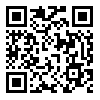Sun, Dec 14, 2025
[Archive]
Volume 19, Issue 5 (Suppl- 2021)
IJRM 2021, 19(5): 249-249 |
Back to browse issues page
Download citation:
BibTeX | RIS | EndNote | Medlars | ProCite | Reference Manager | RefWorks
Send citation to:



BibTeX | RIS | EndNote | Medlars | ProCite | Reference Manager | RefWorks
Send citation to:
Fathi E, Shahedi A, Hosseini Sharifabad M, Vakili M. P-82 Protective effects of curcumin on sperm and stereological parameters in testes of formaldehyde-exposed NMRI mice: An experimental study. IJRM 2021; 19 (5) :249-249
URL: http://ijrm.ir/article-1-2888-en.html
URL: http://ijrm.ir/article-1-2888-en.html
1- Department of Biology and Anatomy, Shahid Sadoughi University of Medical Sciences, Yazd, Iran. , elahe72.fathi@gmail.com
2- Department of Biology and Anatomy, Shahid Sadoughi University of Medical Sciences, Yazd, Iran.
3- Department of Community Medicine, Faculty of Medicine, Shahid Sadoughi University of Medical Sciences, Yazd, Iran.
2- Department of Biology and Anatomy, Shahid Sadoughi University of Medical Sciences, Yazd, Iran.
3- Department of Community Medicine, Faculty of Medicine, Shahid Sadoughi University of Medical Sciences, Yazd, Iran.
Abstract: (483 Views)
Background: Formaldehyde (FA) exposure is one of the important causes of cellular injury and oxidative damage in testis, and leads to infertility.
Objective: This study aimed was to assess the protective effects of curcumin on sperm and stereological parameters in testes from formaldehyde-exposed NMRI mice.
Materials and Methods: At 6-8 weeks of age, 24 adult male NMRI mice weighing 30-35 g were separated into four groups (n = 6) based on the treatment they received: Group І (control) no treatment, group ΙΙ received FA (10 mg/kg), group ΙΙΙ received FA (10 mg/kg) and curcumin (100 mg/kg), and group IV (Solvent) received dimethyl sulfoxide (DMSO) (0.2 ml/day). Materials were administered intraperitoneally for 35 days. After excision, epididymis tissues were placed in 1-ml aliquots of Ham's F10 medium at 37°C for 20 min and were then used in analyses of sperm parameters. Testes were fixed and stained with Hematoxylin and Eosin (H & E) for investigations of stereological indices. We also determined lipid peroxidation levels using malondialdehyde (MDA) assays.
Results: Mean sperm parameters (count, motility, viability, and morphology) differed significantly between groups ΙΙ and ΙΙΙ (p ≤ 0.001). Stereological indices, including Leydig and spermatogonia cell numbers and surface-to-volume ratios of seminiferous tubules were significantly higher in group ΙΙΙ than in group ΙΙ (p ≤ 0.001). Finally, MDA levels in group III were significantly lower than in group II (p = 0.001).
Conclusion: Our data showed that the curcumin, as an antioxidant, reduced FA-induced damage in sperm parameters and stereological indices in mice testis.
Objective: This study aimed was to assess the protective effects of curcumin on sperm and stereological parameters in testes from formaldehyde-exposed NMRI mice.
Materials and Methods: At 6-8 weeks of age, 24 adult male NMRI mice weighing 30-35 g were separated into four groups (n = 6) based on the treatment they received: Group І (control) no treatment, group ΙΙ received FA (10 mg/kg), group ΙΙΙ received FA (10 mg/kg) and curcumin (100 mg/kg), and group IV (Solvent) received dimethyl sulfoxide (DMSO) (0.2 ml/day). Materials were administered intraperitoneally for 35 days. After excision, epididymis tissues were placed in 1-ml aliquots of Ham's F10 medium at 37°C for 20 min and were then used in analyses of sperm parameters. Testes were fixed and stained with Hematoxylin and Eosin (H & E) for investigations of stereological indices. We also determined lipid peroxidation levels using malondialdehyde (MDA) assays.
Results: Mean sperm parameters (count, motility, viability, and morphology) differed significantly between groups ΙΙ and ΙΙΙ (p ≤ 0.001). Stereological indices, including Leydig and spermatogonia cell numbers and surface-to-volume ratios of seminiferous tubules were significantly higher in group ΙΙΙ than in group ΙΙ (p ≤ 0.001). Finally, MDA levels in group III were significantly lower than in group II (p = 0.001).
Conclusion: Our data showed that the curcumin, as an antioxidant, reduced FA-induced damage in sperm parameters and stereological indices in mice testis.
Type of Study: Congress Abstract |
Subject:
Fertility & Infertility
Send email to the article author
| Rights and permissions | |
 |
This work is licensed under a Creative Commons Attribution-NonCommercial 4.0 International License. |




